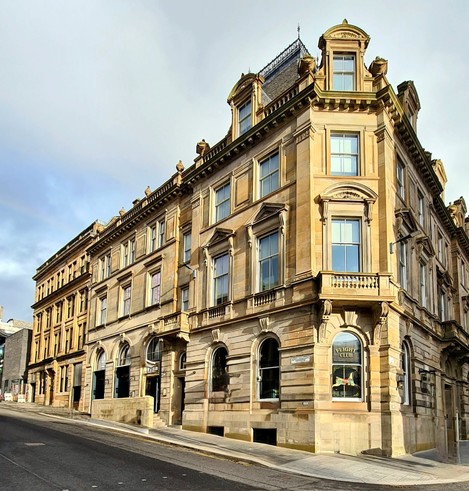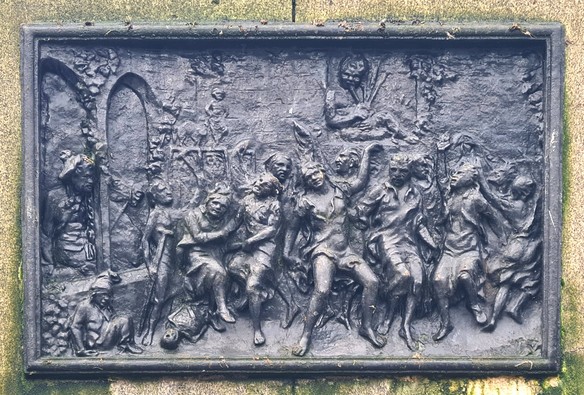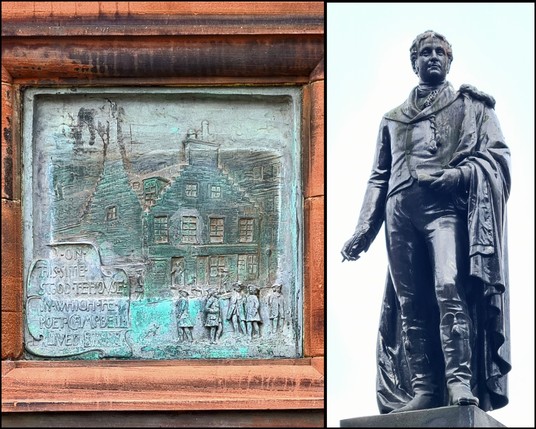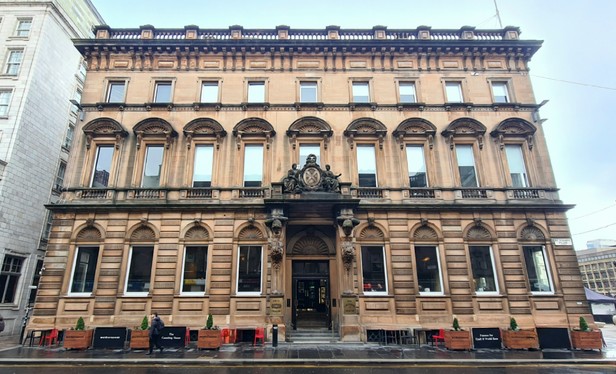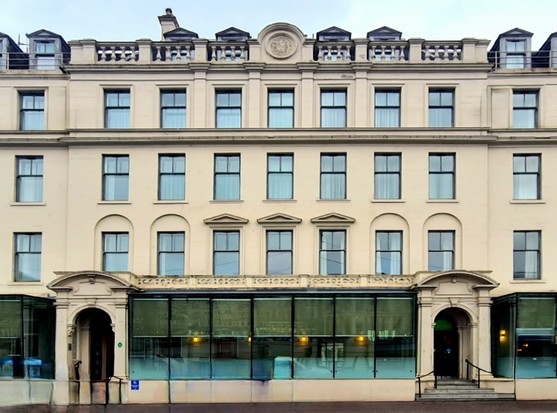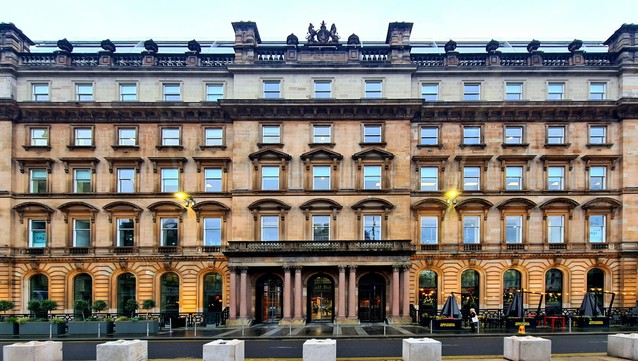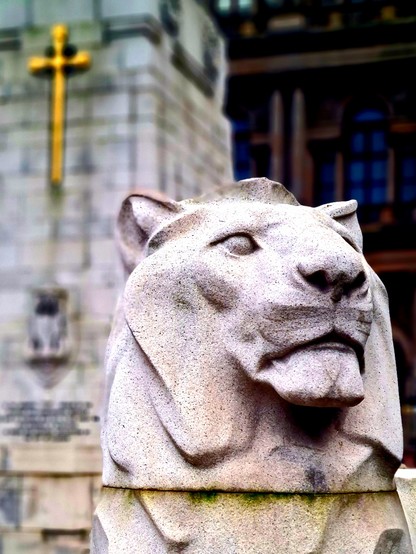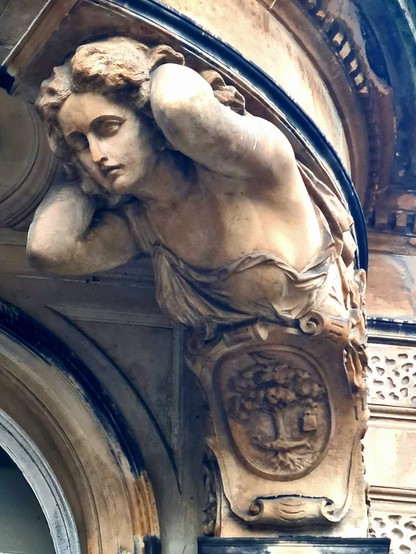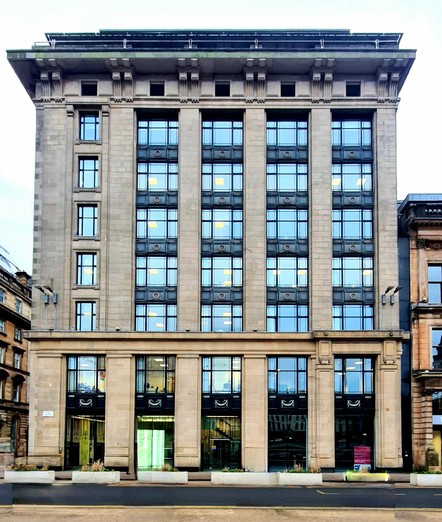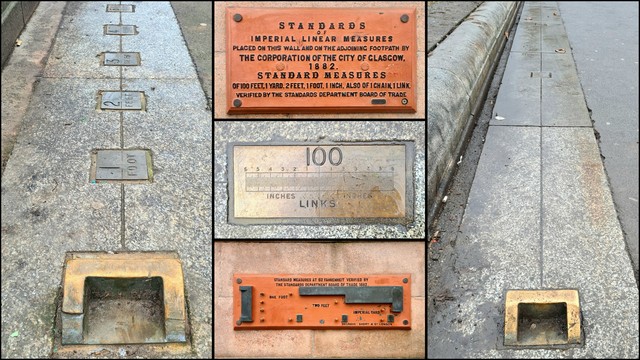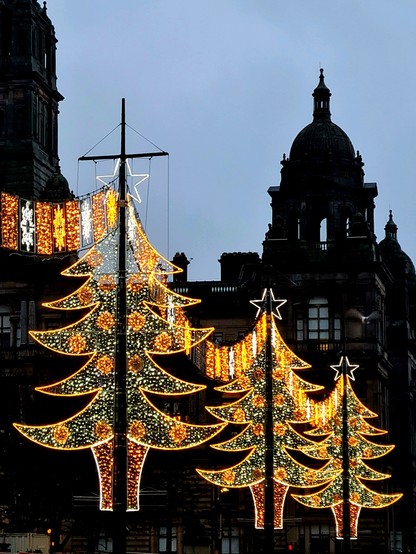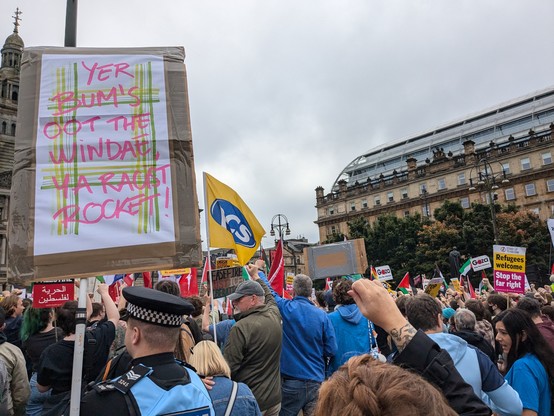Victorian Office building on the corner of George Street and North Frederick Street in central Glasgow. Designed by W.W. Robertson and built in 1885, it had Renaissance style details and a French style roof with dormer attic windows.
Recent searches
Search options
#GeorgeSquare
Really enjoyed this guy lifting up the mood in #GeorgeSquare what a soothing voice! #glasgow #scotland
This panel is on the Robert Burns statue in George Square in central Glasgow, and was created by James Alexander Ewing in the 1880s.
A sculpted bronze panel of Alloway Kirk scene from Robert Burns' 1791 narrative poem Tam o' Shanter, where he first lays eyes on the young witch he nicknames Cutty Sark (after the revealling gown she's wearing). Entranced by her salacious dancing, Tam calls out, revealling his presence to the assembled witches, and causing him to have to flee for his life.
Cont./
Today in Labor History January 31, 1919: Bloody Friday occurred when 60,000 demonstrators gathered in George Square, Glasgow, Scotland, in support of a strike. Police launched a vicious and unprovoked attack, bashing heads with their batons. Protesters retaliated with fists, broken bottles and iron railings, forcing the police to retreat. An estimated 10,000 British troops were sent to quash the battle. One cop died months later from injuries sustained during the battle. The strike occurred in the wake of World War I in response to high unemployment. The Scottish TUC and Clyde Workers’ Committee wanted to increase job openings by reducing the work week from 47 hours to 40.
While he has largely fallen out of favour in the years since his death in 1844, he was well enough regarded in his day to be buried in Poets' Corner in Westminster Abbey alongside the likes of Chaucer, Dickens, Browning, Kipling and Tennyson.
A plaque marking the birthplace of the Romantic poet Thomas Campbell at 215 High Street in Glasgow, and his statue in nearby George Square. Born in 1777, Campbell was not only a highly respected poet by the likes of Byron, he also served as the Rector of Glasgow University and helped found University College London.
Cont./
The former Bank of Scotland building on the corner of Saint Vincent Place and George Square. Built in the 1860s and designed by John T. Rochead, it' s grand, Italian Renaissance style, featuring Atlantes created by William Mossman around its door, this buulding set the style for the others that now line the western side of George Square.
It became the Queen's Hotel in 1855, shortly after the opening of the first intercity railway line in Scotland, in 1842, which ran from Haymarket in Edinburgh to Queen Street Station in Glasgow, which surrounds this building. At this time, it was one of at least seven hotels lining George Square, built to cater for the steady stream of travellers between Scotland's two largest cities.
A Classical style terrace overlooking George Square in Glasgow. Built around 1810, the porches and balcony were added around 1850, while the top flooor and mansard attic was added in 1903. The glass conservatories were added in 1986. Originally domestic accommodation, it gives an idea of how the area around George Square would have looked at the start of the Victorian era.
Cont./
The former General Post Office on George Square in Glasgow. Designed by Robert Mathieson of the Office of Public Works for Scotland, it was built in the 1870s, and was later extended and enlarged by W.W. Robertson in the 1890s and C.J.W. Simpson in the 1910s.
One of the two lions on the Cenotaph in Glasgow's George Square. It was created in the 1920s to remember those who died during World War I. It was designed by the architect J.J. Burnet, while the sculptures, including the lions, were created by Ernest Gillick.
One of the rather wonderful caryatids above one of the George Square entrances to Merchants' House in Glasgow. It was scupted by James Young and was created in the 1870s. The coat of arms at her base is that of the City of Glasgow.
The former McLaren Warehouse on George Square in Glasgow. Designed by James Miller in the Modern Classical style he favoured towards the end of his career, it was built in the 1920s. It was redeveloped behind the facade in the 1990s by Glass Murray Architects, including the addition of two new attic storeys, and renamed Lomond House.
#glasgow #architecture #georgesquare #modernclassicalarchitecture #architecturephotography
#glasgowbuildings #jamesmiller
Standards of Imperial Linear Measures from George Square in Glasgow. Installed in 1882 by the Glasgow Corporation, together they provide standard measures for one inch, one foot, two feet, a yard, a link, a chain and 100 feet. It was created by Degrave, Short and Company of London, and was verified by the Standard Department of the Board of Trade at 52 degrees Fahrenheit, or 11.1 degrees C.
George Square Christmas lights, with the Glasgow City Chambers in the background.
The entrance to the City Chambers on George Square in Glasgow decorated for Christmas 2023. When I was a kid, going along to see the lights on George square was one of my favourite things to do. That and going to the Carnival at the Kelvin Hall.


